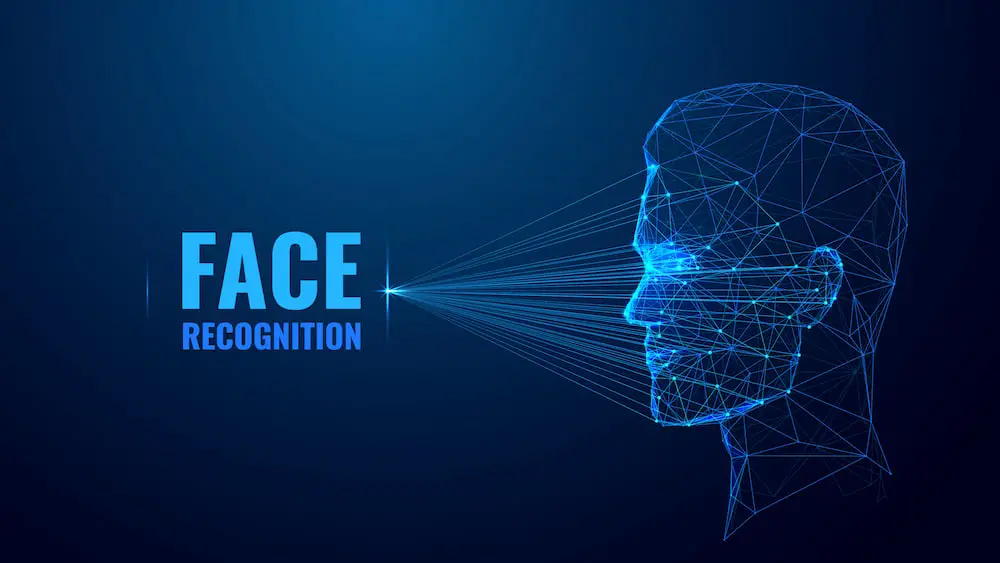Facial recognition is a technique to identify or confirm the character of an individual using their face. Facial recognition technology can be used to identify people from photos, accounts, or legacy.
Facial recognition is a class of biometric security. Different types of biometric programming include voice recognition, attractive unique mark recognition, and eye retina or iris recognition. Facial recognition technology is mostly used for security and policing, with increasing interest for a variety of purposes.
The official website for the CorelDRAW product family. Get product information and updates, free trials, special offers, and access to tutorials and videos. Click Here.
How does facial recognition work?
Many individuals know about face recognition technology through the FaceID used to open iPhones (in any case, this is just a single use of face recognition). Commonly, facial recognition doesn’t depend on a gigantic data set of photographs to decide a singular’s character — it essentially distinguishes and remembers one individual as the sole proprietor of the gadget, while restricting admittance to other people.
Past opening telephones, facial recognition works by matching the essences of individuals strolling past unique cameras, to pictures of individuals on a watch list. The watch records can contain pictures of anybody, including individuals who are not associated with any bad behavior, and the pictures can emerge from any place — even from our social media accounts.
Feature of Facial recognition
Facial recognition technology tends to operate as follows:
Face detection
The camera recognizes and locates the image of a face, either alone or in a group. The image may show the individual gazing directly ahead or in profile.
Face analysis
Then, an image of the face is captured and analyzed. Most facial recognition technology depends on 2D rather than 3D images because it can all the more helpfully match a 2D image with public photos or those in a database. The software reads the calculation of your face. Key factors incorporate the distance between your eyes, the profundity of your eye attachments, the distance from the forehead to the jawline, the shape of your cheekbones, and the contour of the lips, ears, and jaw. The aim is to identify the facial landmarks that are critical to recognize your face.
Converting the image to data
The face capture process transforms analog information (a face) into a bunch of digital information (data) based on the individual’s facial features. Your face’s analysis is essentially transformed into a mathematical formula. The numerical code is called a faceprint. Similarly that thumbprints are remarkable, each individual has their own faceprint.
Finding a match
Your faceprint is then looked at against a data set of other known faces. For instance, the FBI approaches up to 650 million photographs, drawn from different state information bases. On Facebook, any photo tagged with an individual’s name turns into a part of Facebook’s database, which may also be utilized for facial recognition. On the off chance that your faceprint matches an image in a facial recognition database, a determination is made.
Of all the biometric measurements, facial recognition is viewed as the most natural. Naturally, this makes sense, since we typically perceive ourselves and others by taking a gander at faces, rather than thumbprints and irises. It is estimated that over half of the total populace is touched by facial recognition technology regularly.
How facial recognition is used?
The technology is used for a variety of purposes. These include:
Unlocking phones
Various telephones, including the latest iPhones, use face recognition to open the gadget. The technology offers a strong way to safeguard personal data and guarantees that delicate data remains inaccessible assuming the telephone is stolen. Apple claims that the chance of a random face opening your telephone is about one in every 1 million.
Law enforcement
Facial recognition is regularly being utilized by law requirements. According to this NBC report, the technology is increasing amongst law implementation agencies inside the US, and the same is valid in other nations. Police gather mugshots from arrestees and compare them against local, state, and federal face recognition databases. When an arrestee’s photo has been taken, their image will be added to databases to be scanned at whatever point police carry out another criminal search.
Also, versatile face recognition allows officials to utilize smartphones, tablets, or other portable gadgets to take a photo of a driver or a pedestrian in the field and immediately compare that photo against at least one face recognition database to attempt an identification.
Airports and boundary control
Facial recognition has turned into a familiar sight at many airports around the world. Increasing quantities of travelers hold biometric passports, which allow them to avoid the ordinarily lengthy lines and instead walk through an automated ePassport control to reach the gate faster. Facial recognition decreases waiting times as well as allows airports to further develop security. The US Department of Homeland Security predicts that facial recognition will be utilized on 97% of travelers by 2023. As well as at airports and line intersections, the technology is utilized to enhance security at large-scale occasions like the Olympics.
Finding missing people
Facial recognition can be utilized to track down missing people and casualties of human trafficking. Assume missing individuals are added to a database. In that case, law requirements can be alerted as soon as they are perceived by face recognition — whether it is in an airport, retail store, or other public space.
Reducing retail crime
Facial recognition is utilized to identify when known shoplifters, organized retail criminals, or individuals with a history of fraud enter stores. Photographs of individuals can be matched against large databases of criminals with the goal that misfortune counteraction and retail security professionals can be informed when customers who potentially address a threat enter the store.
Improving retail experiences
The technology offers the potential to further develop retail encounters for customers. For example, stands in stores could perceive customers, make item ideas based on their purchase history, and point them in the correct bearing. “Face pay” technology could allow customers to avoid long checkout lines with more slow payment strategies.
Banking
Biometric internet banking is another advantage of face recognition. Instead of utilizing one-time passwords, customers can authorize transactions by taking a gander at their smartphone or PC. With facial recognition, there are no passwords for hackers to think twice about. On the off chance that hackers steal your photo database, ‘dormant’ detection – a procedure used to decide if the wellspring of a biometric sample is a live human being or a fake representation – ought to (in theory) keep them from involving it for impersonation purposes. Face recognition could make check cards and signatures a relic of days gone by.
Healthcare
Hospitals utilize facial recognition to assist with patient care. Healthcare suppliers are trying the utilization of facial recognition to access patient records, streamline patient registration, recognize feelings and pain in patients, and even assist to identify explicit hereditary diseases. AiCure has fostered an app that utilizes facial recognition to guarantee that individuals take their medication as endorsed. As biometric technology turns out to be more affordable, adoption inside the healthcare sector is supposed to increase.
Tracking student or worker attendance
Educational establishments in China use face recognition to guarantee students are not playing hooky. Tablets are utilized to scan students’ faces and match them to photos in a database to validate their characters. More broadly, the technology can be utilized for workers to sign all through their workplaces, with the goal that businesses can track attendance.
The official website for the CorelDRAW product family. Get product information and updates, free trials, special offers, and access to tutorials and videos. Click Here.
Advantages of face recognition
Apart from unlocking your smartphone, facial recognition brings other Advantages:
Increased security
At the government level, facial recognition can help identify terrorists or other criminals. On a personal level, facial recognition can be used to lock personal gadgets and as a security tool for personal surveillance cameras.
crime reduction
Facial recognition makes it easy to track down thieves, fraudsters, and intruders. The mere presence of facial recognition frameworks can act as a deterrent, especially for petty crimes. Along with physical security, there are also benefits of cyber security. Companies can engage facial recognition technology as an alternative to passwords to access PCs. In theory, the technology cannot be hacked because there is nothing to steal or change, as is the case with a password.
Removing bias from stop and search
Public concerns about inappropriate stops and searches are a source of controversy for police – facial recognition technology can work in interactions. By automatically separating suspects from the crowd without human interaction, facial recognition technology can help reduce potential bias and stop and search law-abiding residents.
Greater advantage
As the technology becomes more widespread, customers will want to pay in stores using their faces instead of taking out their Visa or cash. This can save time in the checkout line. Because facial recognition requires no contact with fingerprints or other security measures – helpful in a post-coronavirus world – facial recognition offers a fast, automated and seamless verification experience.
Fast processing
The most common way to understand a face takes a moment, which has advantages for companies that use facial recognition In an age of digital attacks and advanced hacking tools, companies need both secure and fast technology. Facial recognition enables quick and efficient verification of a person’s character.
Integration with other technologies
Most facial recognition systems are compatible with most security software. In fact, it is easily assembled. This limits the number of additional initiatives expected to be implemented.
The official website for the CorelDRAW product family. Get product information and updates, free trials, special offers, and access to tutorials and videos. Click Here.
Conclusion
Technologically the world is now beyond imagination. Face recognition is a remarkable invention. It improves the standard of living of people. Such technology is moving our world forward rapidly. The safety standard of our life has improved a lot.
Biometric technology offers highly reliable security measures. Despite the dangers, frameworks are helpful and difficult to duplicate. These frameworks will continue to evolve from here – the challenge will be to maximize their benefits while limiting their dangers.
Important Affiliate Disclosure
We at projectventive.com are esteemed to be a major affiliate for some of these products. Therefore, if you click any of these product links to buy a subscription, we earn a commission. However, you do not pay a higher amount for this. Rest easy as the information provided here is accurate and dependable.

